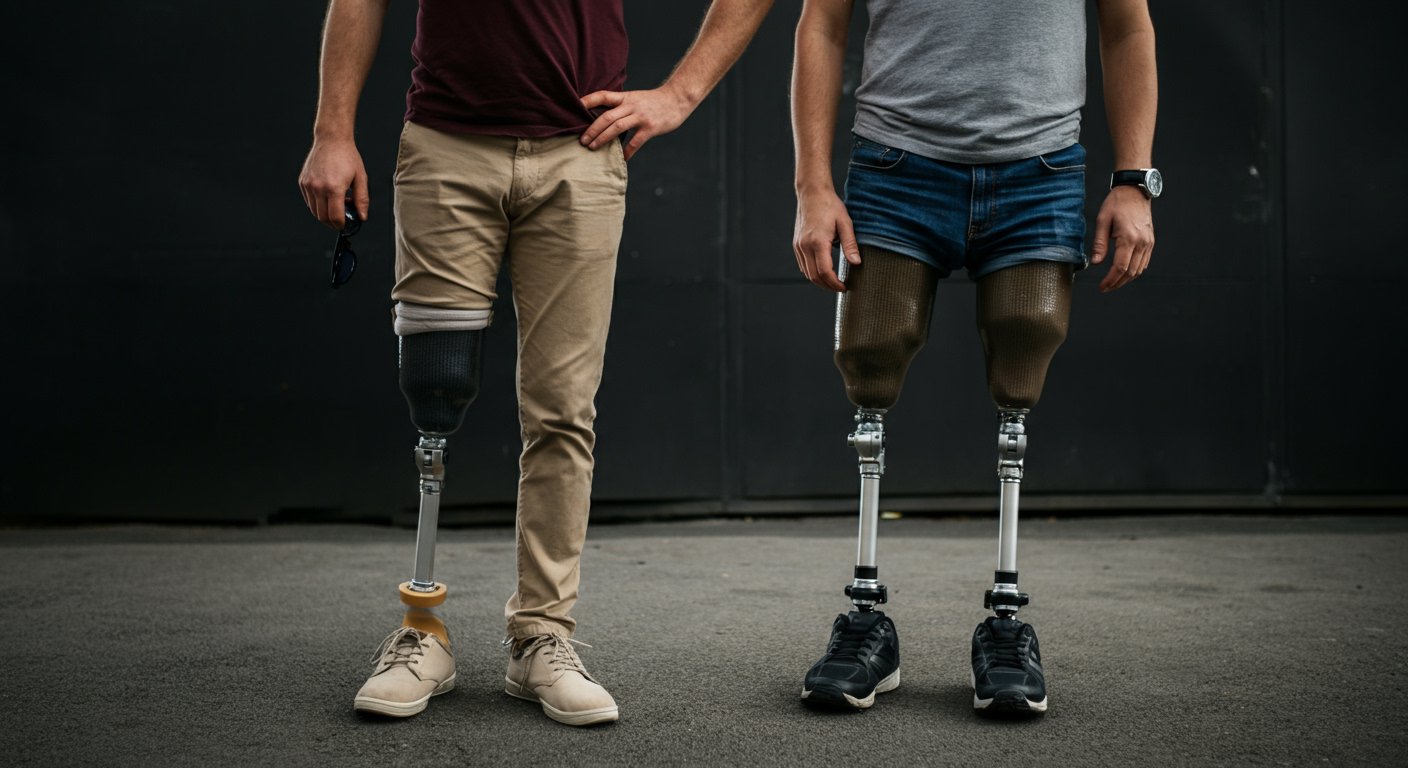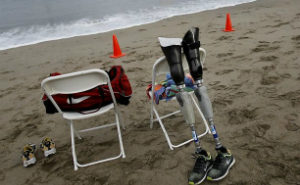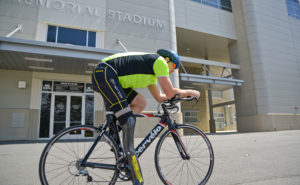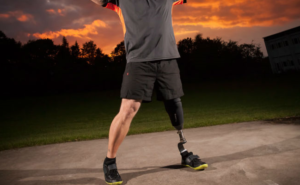Choosing the right prosthetic leg can significantly impact a person's life. Each type addresses specific needs and abilities, helping users regain independence and mobility. Whether you’re focusing on daily tasks, pursuing athletic goals, or exploring advanced technologies, understanding your options is key. In this guide, we’ll examine the main prosthetic leg types and their uses to help you make informed decisions about better mobility.
Key Takeaways:
- Main Components: Prosthetic legs consist of a socket (custom-fitted), pylon (structural support), suspension system (keeps prosthetic secure), and foot (varied designs for activity levels).
- Materials: Common materials include lightweight titanium, aluminum, carbon fiber for strength and responsiveness, and silicone for comfort.
- Types of Prosthetics: Below-knee prosthetics (retain natural knee) are simpler; above-knee prosthetics (include knee joint) require more training.
- Prosthetic Feet: Options include SACH (basic), dynamic-response (responsive for active movement), and microprocessor feet (adaptive).
- Advanced Technologies: Microprocessor and bionic limbs integrate sensors and AI to improve movement, while hybrid designs provide energy efficiency.
- Customization: Designs are often created to address user-specific needs, with pediatric models being adjustable for growth.
- Costs: Prices range from $5,000 to $70,000, with funding support available through insurance, nonprofits, and payment plans.
- Adaptation: Rehabilitation, proper fitting, and physical training are essential for improving mobility and independence.
- Innovations: Developments such as eco-friendly materials, modular systems, shock absorption features, and activity-specific designs aid usability and sustainability.

The Main Parts of a Prosthetic Leg
A prosthetic leg is made up of key components and advanced materials. Each part works together to create a device that feels natural, provides support, and remains secure during use.
Common Materials
Prosthetic legs are built using lightweight yet durable materials. Titanium and aluminum, known for their strength and low weight, are common. Carbon fiber adds flexibility and responsiveness, enhancing movement efficiency. Silicone liners cushion the residual limb, improving comfort and protecting the skin. Together, these materials ensure durability, functionality, and comfort.
Core Components
The main parts of every prosthetic leg include the socket, pylon, suspension system, and foot. The socket connects the prosthetic to the user's residual limb, requiring a precise custom fit for comfort. Acting as the structural backbone, the pylon holds the device together, often using metal or carbon fiber for strength and lightness. Suspension systems, such as pin-locks or vacuum systems, secure the prosthetic in place. The foot comes in various designs, ranging from simple models to advanced options that store and release energy.
Suspension Systems
Suspension systems keep the prosthetic securely attached. Tight connections, such as suction or pin-lock systems, prevent unwanted movement. Vacuum systems, for example, use air pressure to maintain a snug fit, reducing discomfort during daily activities. These systems not only improve comfort but also reduce skin irritation, ensuring stability throughout the day.
By combining well-engineered components with high-quality materials, prosthetic legs achieve both functionality and comfort, helping users move with confidence.
The Function of Different Prosthetic Leg Types
All of the prosthetic leg types are the result of advanced engineering, designed to support mobility and meet diverse needs. The differences between types make certain models better suited for specific lifestyles and functional goals.
Above-Knee Prosthetic Legs
Above-knee (transfemoral) prosthetics replace both the knee and lower leg. They have either mechanical or electronic knee joints to assist with sitting, standing, and walking. Mastering their use typically requires extensive training. In contrast, below-knee (transtibial) prosthetics retain the natural knee joint, making them less complex and easier to use. Both options, however, require precise adjustments for comfort and effectiveness.
Types of Prosthetic Feet
Prosthetic feet are designed to accommodate a wide range of lifestyles:
- Solid Ankle Cushioned Heel (SACH): Provides a basic, stable design suitable for minimal activity.
- Dynamic-Response Feet: Engineered for active users, these designs store and release energy for smoother steps.
- Microprocessor Feet: Feature embedded sensors for adapting to surfaces, offering movement closer to that of a natural foot.
These options help users manage specific terrain needs, daily activities, and personal physical goals.
Activity-Specific Prosthetics
Athletes and active users benefit from prosthetics tailored for performance. Running blades, crafted from curved carbon fiber, enhance speed and efficiency. Waterproof designs allow for swimming and water-based sports. These specialized prosthetics are built for durability and optimized movement, supporting users as they enjoy their favorite activities.
Curious about which type suits you? Learn more about prosthetic options to find the right match for your lifestyle.
Advanced Prosthetic Technologies Are Available
Technological advancements have dramatically improved how prosthetic legs function, providing stability and enhancing the walking experience.
Microprocessor-controlled legs, for instance, are equipped with sensors that detect movement and adapt to conditions in real-time. By recognizing changes in terrain and movement, they improve balance and provide a smoother walking experience. Whether it's handling slopes or staying stable on uneven ground, these prosthetics make movements seem more natural. Routine maintenance, such as charging batteries, is necessary to ensure consistent performance.
Robotic and bionic prosthetics take adaptability further. These devices are programmed to respond to the user's body, using motors and other mechanisms to mimic muscle motion. Some bionic systems even connect directly to nerves or muscles, allowing intuitive control that closely resembles natural limb movements. Such technology enables users to engage in more complex activities, such as hiking or running, while using their energy more efficiently.
Hybrid prosthetics combine mechanical elements, like springs, with microprocessor components for improved performance. These designs generate force during motion, reducing fatigue while walking. In addition, features like shock absorption increase comfort for more challenging physical activities. Hybrid systems are a step forward in creating adaptable and efficient solutions for active lifestyles.
Prosthetic Leg Types Designed for Specific Needs
Each prosthetic leg is customized for the individual who will use it. Specialists take into consideration goals, lifestyle needs, and physical requirements when developing these devices.
Custom designs start with creating a mold of the residual limb, ensuring the socket fits precisely. Since the socket directly connects to the user's body, precision is critical for both comfort and functionality. Materials like carbon fiber or titanium are often used for lightweight durability, particularly for active individuals.
For children, pediatric prosthetic legs offer unique features. Growing children need adjustability, so these models can be modified to adapt to their changing size. They are also built with durability in mind, given kids' active lifestyles and increased physical demands.
Comfort plays a major role in prosthetic design. Silicone liners provide a soft, cushioned layer between the limb and the socket, reducing the likelihood of irritation and friction. Silicone's flexibility allows it to conform to movement while maintaining support, making it a preferred material for many users.
Prosthetic Leg Costs and Funding
The cost of prosthetic legs can vary between $5,000 and $70,000 based on design, functionality, and feature complexity. Basic models are more affordable compared to advanced options like microprocessor-controlled limbs. However, long-term maintenance, such as repairs and replacements, also adds to the overall expense.
Insurance coverage often depends on the provider. Medicare and Medicaid frequently cover prosthetic limbs if deemed medically necessary, although restrictions may apply for high-tech designs. Private insurers may offer similar benefits but with different limits. For those facing financial hurdles, nonprofit organizations, grants, and payment plans can help cover costs.
Some clinics also offer refurbished prosthetics at reduced rates, making these devices more accessible to those in need.
Adapting to Life with Prosthetic Legs
Adjusting to a prosthetic leg requires physical and emotional resilience. The process takes time and includes several steps, from fitting to rehabilitation.
Common Challenges
Relearning to walk is often the first hurdle. Without sensory feedback, balance can feel unnatural. Skin irritation or pressure sores may also occur if the prosthetic doesn’t fit correctly. Emotionally, individuals may feel frustration or grief while adapting to these changes.
Rehabilitation and Adjustment
Rehabilitation focuses on strength-building exercises to support walking with a prosthetic. Physical therapy guides users through movements like climbing stairs and standing for extended periods. Adjustments in socket fitting are also necessary, as the residual limb's shape evolves.
With dedication and practice, users steadily regain their mobility.
The Latest Innovations in Prosthetic Leg Design
Ongoing advancements in prosthetics address usability, sustainability, and user experience. Many new designs now incorporate eco-friendly materials such as recycled plastics and biodegradable composites, which reduce waste while improving comfort and weight distribution.
Durable designs using materials like carbon fiber and titanium ensure long-lasting performance. Updates to shock absorption systems also reduce strain on the body during activities.
Personalization is becoming more accessible through modular systems, enabling users to replace or upgrade parts with ease. Waterproof prosthetics support activities like swimming, while sport-specific designs allow participation in high-intensity events.
These innovations make prosthetic legs more practical, adaptable, and life-enhancing than ever before.
Prosthetic legs are powerful tools that combine function, technology, and personalization. By understanding components, choosing the right materials, and exploring advancements, you can find a prosthetic that matches your lifestyle. Embrace the possibilities and take steps toward a more active, independent future.
Discover the Right Fit: Exploring Different Prosthetic Leg Types
Choosing the perfect prosthetic leg can be life-changing, and understanding your options is the first step. From advanced microprocessor-controlled knees to lightweight, activity-specific designs, the variety of prosthetic leg types ensures a solution tailored to your unique lifestyle and goals. Visit Horton's Orthotics & Prosthetics to connect with experts who can guide you in selecting the best prosthetic leg for your needs. Take the next step toward mobility and confidence today!



